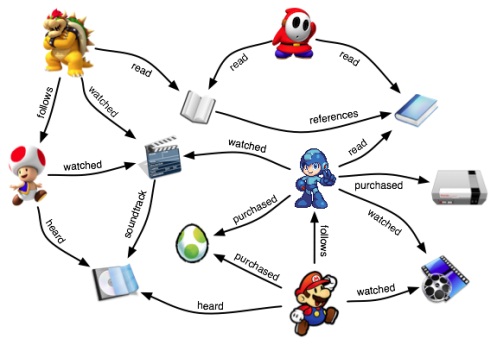The two chapters on Mass Media and Networks revealed their interdependencies when the ideas were considered together. The Internet, as the printing press of 21st century, re-shaped how, when, and who questions addressed during the delivery of media to masses. We are still in the midst of exploration, though.
A graph as a representation of a network is significant because it provides a simpler explanation of how objects or concepts are related to each other in a given context. Mass media is trying to come up with curated and customized content to further reach a broader audience without compromising from the notion of connection. Therefore, content providers use crowdsourcing to tailor their recommendation systems, which gives users a Dystopian freedom of choice that would disguise that they actually have tiny to no control over what they can read, watch, or listen: Someone obviously does not want people to get mad. The user behavior can be represented in a bidirectional graph and insights on certain patterns could be made from it. An example is illustrated below:

Why are graphs being used for recommendation systems? An example of the efficiency of networks revolves around the famous problem called “Six Degrees of Kevin Bacon”. The idea is that any person who is affiliated with credit in a Hollywood movie is only six people apart from Kevin Bacon. In a website called Oracle of Bacon, you can get “Kevin Bacon Number” for anyone that you can query. A similar concept to Erdös number, the authors also discuss how good Kevin Bacon is a center node in the graph representation.
By monitoring the transaction data across any internet, it is possible to tell which points are the “centers”. A project called the Internet Map shows the graph representation of the World Wide Web. From the map, it is a calming experience to tell that our personal websites on the internet are as significant as us in the whole universe. The Slovakian student Martin Vargic came up with this aesthetically stunning map of the internet which also features minimaps that cover surveillance, social networks, browsers, and internet coverage by country.
Leave me a Comment